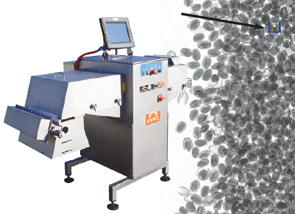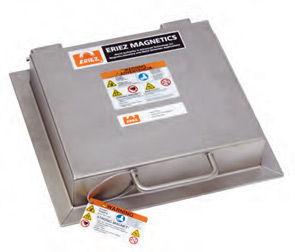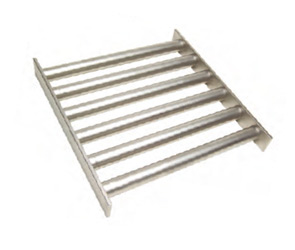Many factors that have traditionally negatively affected metal detectors, such as ground loops, conductive products, and ambient noise, do not affect X-ray machines.
The U.S. government issues strict guidelines for the operation of X-ray machinery in an industrial environment. Manufacturers are required to certify that their products meet FDA guidelines for the radiation safety performance standard for X-ray systems. When used properly, X-ray inspection systems will not degrade or irradiate products.
Metal detection technology has become vital to ensuring product quality in the food industry as highly sensitive, compact metal detector systems meet strict FDA standards and accommodate space-restricted areas.
Evolution of Inspection
Recent advances in magnetic separation technology have resulted in a variety of separators specifically developed for the treatment of fine, high-purity materials. The technology necessary to produce the highest quality, purest, and safest products for the food industry is improving every day.
Metal detection technology has advanced tremendously and has become vital to ensuring product quality in a variety of diverse industries worldwide—particularly in the food industry. Highly sensitive, compact metal detector systems meet strict FDA standards and accommodate space-restricted areas. There are systems tailored to the specific needs of practically any industry.
Contemporary metal detectors have inherited all the reliability, ruggedness, accuracy, and flexibility of digital electronics and computer technology. They can solve many formerly intractable problems, such as the detection and rejection of very fine ferrous and nonferrous materials in free-falling products, interference from nearby moving metallic equipment, and metal identification.

Modern metal detectors operate consistently for long periods of time, often in adverse environments, with little attention or maintenance. They can be configured for minimal intrusion with established process flow. The power required to operate both the detector and the reject device—if any—is minimal, even if a special conveyor is needed to pass the product through the metal detector. Metal detectors can routinely be configured to reject the contaminated product automatically, even if the possible rejection point is some distance from the detector. The detector can also keep detailed records of detected metal, including estimated size and type. Therefore, suspicious product can be isolated after the fact, based on time of processing.
The latest generation of X-ray inspection systems uses advanced linear array technology for superior sensitivity, speed, and sophistication, for both loose product flow and packaged inspection. These cutting edge X-ray systems provide immediate and automatic analysis, detection, and rejection of process and packaged foods, pharmaceuticals, and other goods that require the highest levels of product integrity.
Products are inspected using a high-performance computer image analysis system, which enables the detection of small statistical variations in the product that signal contamination or deviation from accepted specifications.
The main safety features of a cabinet X-ray include a light tower, emergency stop buttons, key lock, curtains, and tunnel covers with dual interlocks. The FDA requires these features on such machines.



Examine All Options
With so many advances in the area of magnetic separators, metal detectors, and X-ray machines, food manufacturers have an array of equipment options to help them reliably detect contamination and protect and maintain the purity of their products. Before the selection process can begin, it’s imperative to understand options and needs. Selecting the proper equipment is crucial to success.
A good starting point in selecting magnetic separators, metal detection, and X-ray inspection equipment is a complete plant survey and appraisal of plant operations. This survey, which should be performed by an experienced professional, is a great way to find out if current installations are providing the best possible protection. It is also an opportunity to learn what the equipment can and cannot do, and to discover the advantages of the newer technologies.
ACCESS THE FULL VERSION OF THIS ARTICLE
To view this article and gain unlimited access to premium content on the FQ&S website, register for your FREE account. Build your profile and create a personalized experience today! Sign up is easy!
GET STARTED
Already have an account? LOGIN
